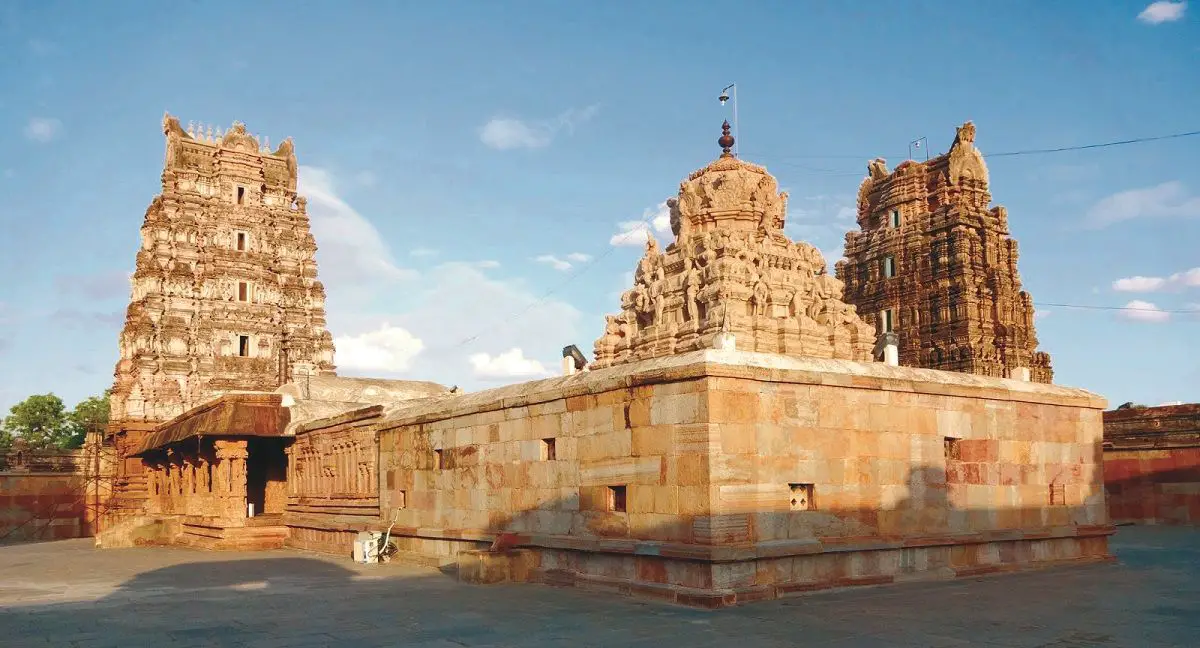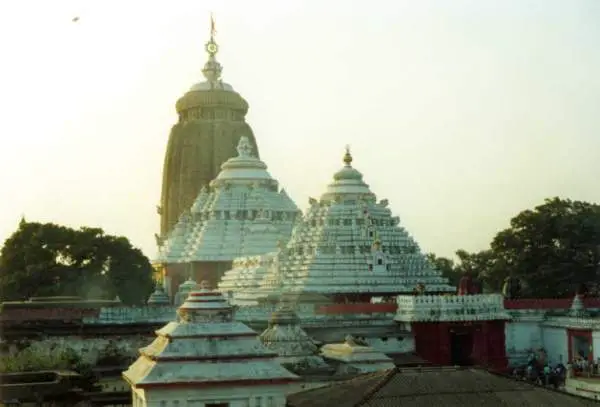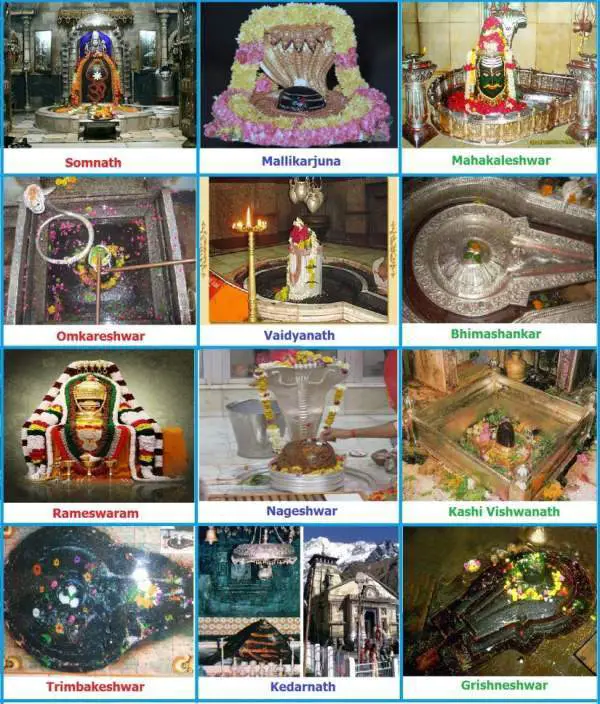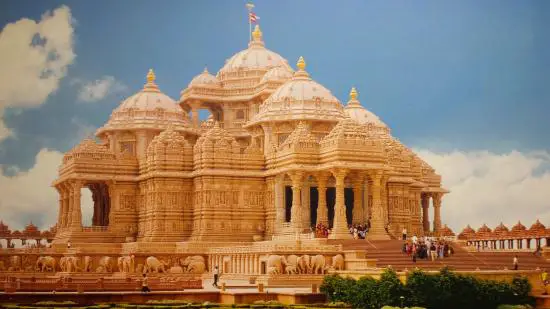Kodandarama Temple is a famous Hindu temple known for its magnificent architecture and opulent designs. But more importantly, it holds a deep significance because of its history and religious value.
Located in the Vontimitta town of Kadapa district in the state of Andhra Pradesh, Kodandarama Temple attracts many visitors around the year.
Even though the temple attracts many pilgrims annually, there are an array of new tourists, both national and international, that visit the temple to seek divine blessings.

The temple offers a stunning view in itself. But the presence of River Tungabhadra flowing adjacently to the temple makes the whole scene even more spectacular.
The pilgrims that visit the Kodandarama Temple also take a dip in the waters of Tungabhadra, as it is considered holy and pious.
Table of Contents
Kodandarama Temple Architecture
Kodandarama Temple is a temple dedicated to Lord Rama. The carvings on the inside of the temple depict Lord Rama and his acolytes. However, the most brilliant thing about the temple is that it has been carved out from a single giant boulder of stone.
It astounds the archaeologists and researchers how difficult and seemingly impossible it is to create something so stunning out of a single piece of rock. The possibility is so less even in today’s day and age of technological advancements. One can only imagine what methods and tools would have been used back in the days when this enormous temple was built.
The temple covers a vast area and has a walled complex that gives it its grandeur. It is built in the traditional Vijayanagara style of architecture, with long and peaky rooftops, delicate carvings, and ethereal earthy designs. Like most of the Southern Temples, Kodandarama Temple depicts Lord Rama in various forms and styles through its intricate carvings.
Even though the temple is dedicated to Lord Rama, none of the carvings mentions Lord Hanuman.
The temple is in the form of a rectangular yard, consisting of three Gopurams or towers. Out of these three towers, the central one consists of the main entry gate for the visitors.
There is a Mandapa or Rangamantapam, like an open space supported by 32 pillars. The mandapa has exquisite sculptures of not only various Gods like Krishna and Vishnu but also consists of sculptures and figurines of Apsaras, the lady attendants.
The temple features many scenes and images of Lord Rama doing various activities. For example, in one of the carvings, Lord Rama is seen with Lord Lakshaman holding a stretched bow in one hand and an arrow in the other. Their bodies are decorated with ornaments, depicted by the exquisitely delicate carvings.
In another instance, Lord Krishna has his left leg straight, and right leg crossed over to another. Many such similarly intricate scenes and instances are depicted in the temple through various sculptures in almost every corner of the temple.
Kodandarama Temple History
Kodandarama Temple is believed to be one of the most ancient temples in India that is under the authority of ASI – Archaeological Survey of India. It was built in the 14th century during the Vijayanagara Empire.
It is believed that two locals named Vontuddu and Mittudu built the temple together. They were initially robbers; however, later, they turned into Ram’s devotees. And out of their love, they built this massive structure.
Their idea of portraying Ram in various temple corners depicts their love and admiration for the deity. It is also believed that after finishing the temple’s construction, the two locals were transformed into stone. The idols present at the temple are believed to have been installed by Jambavantha, the bear king and friend of Lord Rama.
Bammera Pothana, a Vontimitta writer, wrote his magnum opus in the temple. The translator of Valmiki’s Ramayana into Telugu, Sabba Rao, spent many hours in the Kondarama temple worshipping Lord Rama. The saint Annamacharya is believed to have sung and recited many kirtans in this temple.
Kodandarama Temple is also considered to be the residence of Lord Parashuram, the teacher of Guru Dronacharya, for a brief period and was thereby named Bhargava Puri.
Even though the temple was built by Cholas, its architectural designs represent a very Vijayanagara style. This is because the designs, carvings, etc., together represent the times it was built in.
How to Reach Kodandarama Temple?
Due to increased connectivity, it is fairly simple and convenient to reach Kodandarama temple. As the temple attracts many visitors around the year, the government has worked tirelessly to increase transportation convenience for the visitors. Therefore, many local modes of transport are available to reach the temple. If you are coming from outside the state, here are your options;
Kempegowda Airport is the nearest airport to the temple, located in Hubli. It is 143 km away from the temple. If you are an international traveler, you must book your tickets accordingly.
Hampi Railway station is the closest railway station to the temple. Hospet Railway station, however, is another station that has better connectivity as it is connected to many cities in the state.
If you want to travel by road, you can take the KSRTC buses to reach Hampi. The state bus services are reliable, convenient, and offer great connectivity from almost any part of the state.
You can also take hired cabs or taxis to reach the temple directly. In addition, you can take local autorickshaws from the station or airport to reach the temple.
Kodandarama Temple Timing
Kodandarama Temple is accessible seven days a week. The temple opens at 5 AM in the morning and remains accessible till 12 PM. After remaining closed during lunch hours, it reopens at 4 PM and remains open till 9 PM. The entire temple could be easily explored within 2 hours at max and a minimum of 1 hour.
February and March, however, are the best months to visit the temple, as, during this time of the year, the temple is decorated with pretty flowers and colors to mark the arrival of spring.
You can also visit the temple during the time of Ramanavami as a fest is organized on the temple’s premises to celebrate the birth of Lord Rama.
We hope you liked this post on Kodandarama Temple, and please do share it with your friends on social media.




